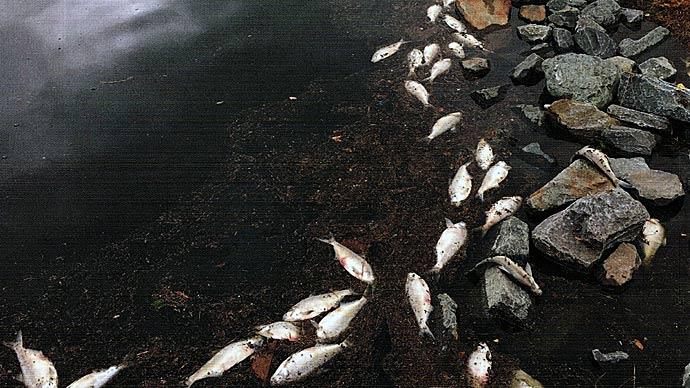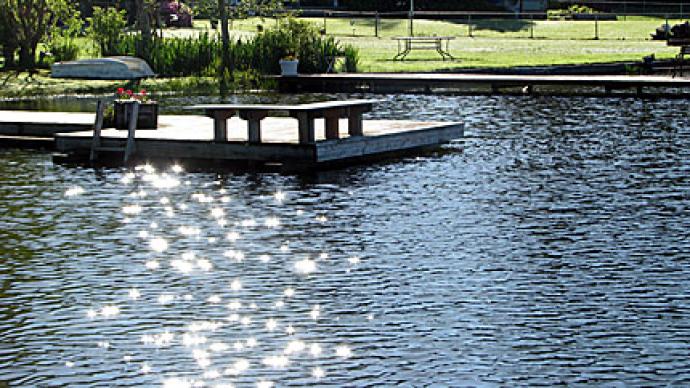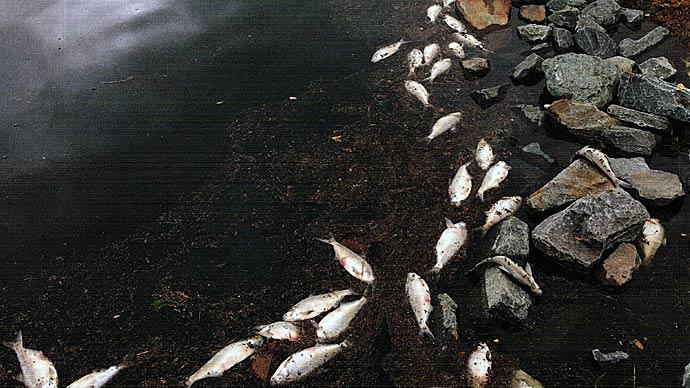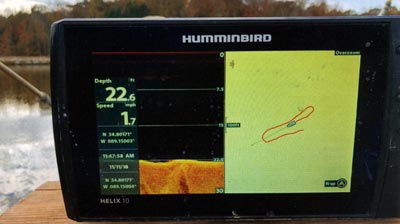
There's a nice-sized lake perched in the middle of a wooded tract of land in the south. It's a club, owned by several families, bought explicitly for them to have a place to take their kids from the city, to be able to hunt, fish, ride their UTV's and enjoy the beauty of nature.
My favorite part of their story? Of the family's kids, there are nine girls and three boys. Those girls love being out there as much as the boys, catching fish, absorbing nature, and spending time in the wild— about an hour from their homes in the city. It's so much fun to watch them engage with each other, their families, and the natural resources at hand.
Kudos to those parents.
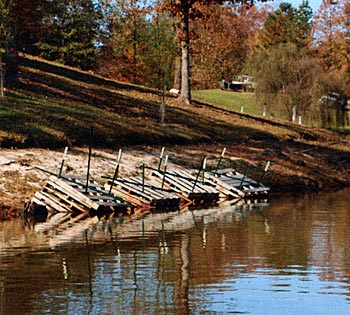
Kudos also to the club for recognizing the best way to manage one of their lakes. To set the stage, they have a pretty big lake, probably 70 acres. That lake is a Flood Prevention site, built back in the day to capture flood waters, impound them, and release excess water slowly downstream into the watershed.
Across the property, next to the house, is a fishing lake, designed just for that purpose by the prior owner. That lake covers more than 25 acres, with an average depth pushing slightly less than 10 feet. Off to one side, directly adjacent to that lake, sits a three-acre pond, a perfect setting for big sunfish.
Back in the summer, the group rang our phone and wanted to talk about the fishery and what they needed to do to grow some nice fish. Their biggest lake had excellent catch rates, with a few fish beyond four pounds, but the lake next to the house has never produced much more than dinky bass in the 9-12" range. What could they do to make those bass grow?
The point-man in the group was skeptical that existing bass would even grow there. He told me they've been catching the same size bass for the last three years. After a local electrofishing survey was accomplished, the scientific results mirrored the catches. Small bass, some sunfish, and no quality-sized bass to speak of.
Those 9-12" bass appeared to have several years on them, with large heads and fairly skinny bodies. The survey showed very few small forage fish.
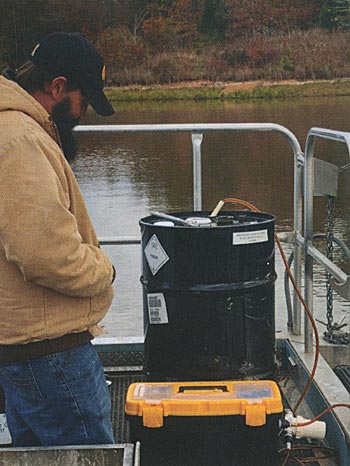
As we talked, these guys agreed they'd like to start over, to speed up the process and build a new fishery from scratch. It made good sense to me—the guy who would rather preserve existing fish and manage around them—that here, for this lake, for this group of managers, the lake would be of better service if it were restarted.
After they saw the initial estimates for the cost of rotenone, they reeled backwards from sticker shock. It would cost around $32,000 to rotenone this lake as it was. It was explained that every foot of water would take about $3,200- 3,500 to eradicate the fish, over all 25-26 acres.
Well, the upper reaches of the lake were extremely shallow, more than three acres with less than two feet of depth. The club decided to drop the lake 4-8 feet, as much as they could, to reduce the cost of rotenone and dry up the upper end to enhance the depths and create fish habitat.
Drawdown started in July.
They got the lake down about four feet and that was it. They weren't going to cut the dam, and mostly used siphons to lower the water. They brought in several diesel-powered pumps and started pumping. By late September, water was down almost six feet, and that's when the rains came. Incessant rains. They'd pump the lake down, it would rise. That happened through October, headed into November. After several rounds of paying rent on the pumps, buying diesel fuel, and paying someone to man the pump, they decided to forego any more pumping and go ahead with the rotenone project.
In the meantime, heavy equipment and quite a few laborers were brought in for habitat improvement. The club found almost 1,000 wooden pallets, stacked them four or five high, and then attached and anchored them to the lake floor. The bulldozer dug some channels, built some peninsulas, and rearranged shallow areas to make them more suitable for fish habitat. Gravel spawning beds were added and the upper end of the lake received a tidy makeover.
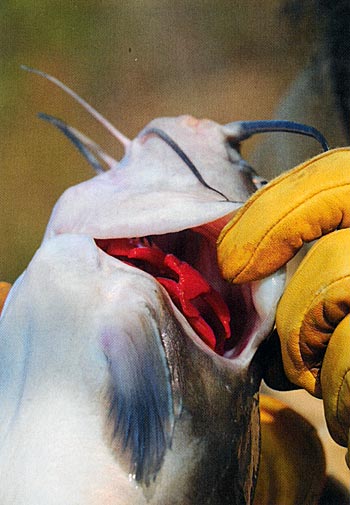
We ordered the rotenone from Helena Chemicals, via our long-time colleague, Kelly Duffie, and had it shipped to the site. We ordered six 30-gallon barrels of the stuff.
If you plan to use rotenone, understand it is now a restricted use piscicide, and not easy to find anymore. Plus, budget $110-125 per gallon of the magic stuff if you intend to buy some. Also understand how rotenone works. It doesn't poison the fish. When emulsified into water, rotenone crosses the fish's gills and attaches to their gill filaments. Basically, it's a blood thinner that leaves the gills incapable of taking up oxygen. Within minutes, fish quickly suffocate. Their gills turn a brilliant red, and fish don't last very long.
One of my favorite things about working with Kelly Duffie is empathy for guys in the field. As the old saying goes, he's, "Been there, done that." Kelly offered to ship a clever device he built to apply the product. Keep in mind rotenone is lighter than water, and is pretty oily. It needs to be as evenly mixed in the water column as possible, knowing that it emulsifies rather than mixes. With his metering device, we could pump the rotenone deep, and with our depth finder, we could track our path and be efficient as we applied it.
As fate had it, when the date in November came around, we were dodging weather events. The water temperature had dropped to 56, and the water was autonomous, top to bottom. We measured 6.5 ppm oxygen at 56 degrees at 26 feet deep, and the same at the surface. We had to get the rotenone to the bottom. We were marking fish at 16-20 feet, and in order to erase them, we had to engage them. We did that.
We met Dr. Shawn McNulty and his crew, from American Sport Fish Hatchery in Alabama, to assist with this sizeable project. With their small boat working the shallows, pumping rotenone through a sprayer, our boat went to work in the deeper part of the lake. Over the next six hours, rotenone was methodically pumped in. The bigger boat, with the meter, applied the piscicide in layers, from the bottom up.
It didn't take long before some fish started surfacing, piping air. We captured some of the first ones, sunfish and crappie, and put them into fresh water, to see if any could be saved and moved to the big lake. But it wasn't to be. They were gone in short order.
By day's end, thousands of fish were floating, with many more laying on the bottom, which would float over the next few days. There were huge grass carp, pushing 30-35 pounds. We saw a few large channel catfish, too. But we saw one large bass—grossly outnumbered by the stunted, old, thin bass, bluegills, black crappie, and redear sunfish.
I was a little bit apprehensive about doing this project in colder water, but Kelly reassured me with a dose of common sense. He said, "They have to breathe, don't they? The rotenone will do what it does." He was right.
We expect three to five weeks to go by before the rotenone dissipates and the lake regains its ability to hold fish.
In the meantime, local buzzards and a couple of bald eagles were able to take advantage of a free meal.
As we reflect on this decision, there's no doubt it was the right one. All those skinny, old, dead fish showed us the truth.
Next, we work on a game plan for restocking and management.
Reprinted with permission from Pond Boss Magazine

